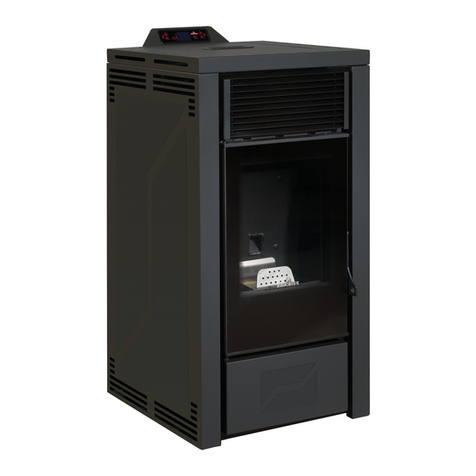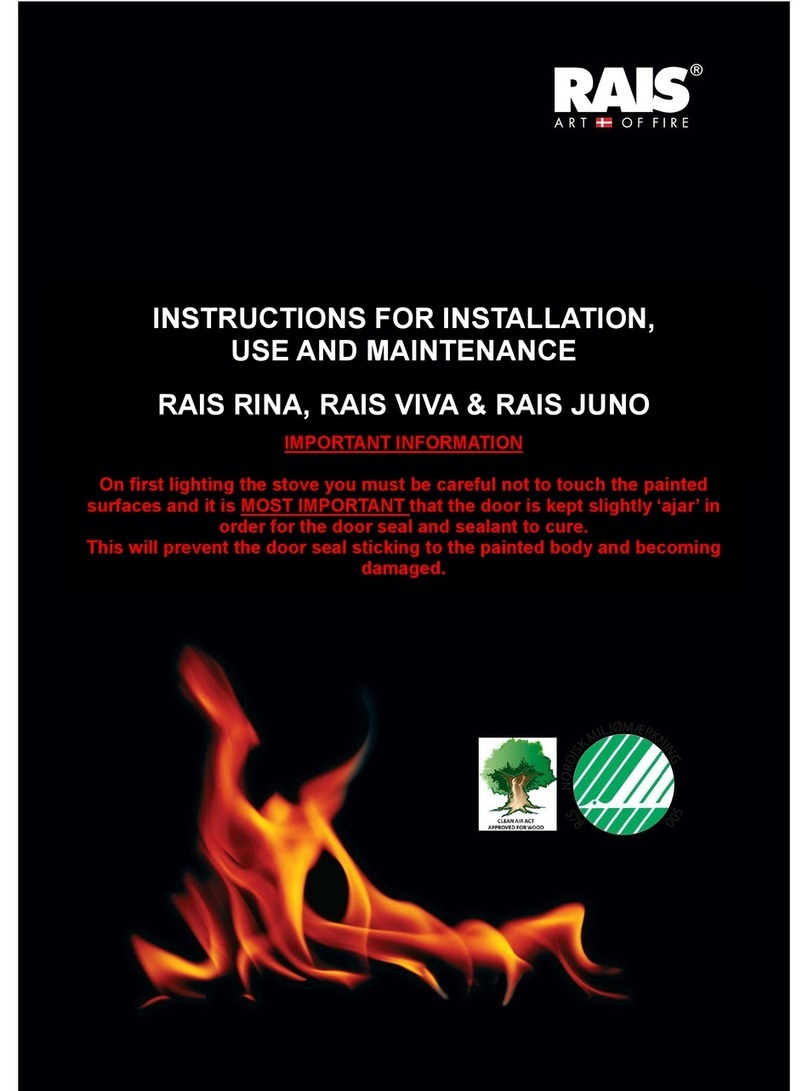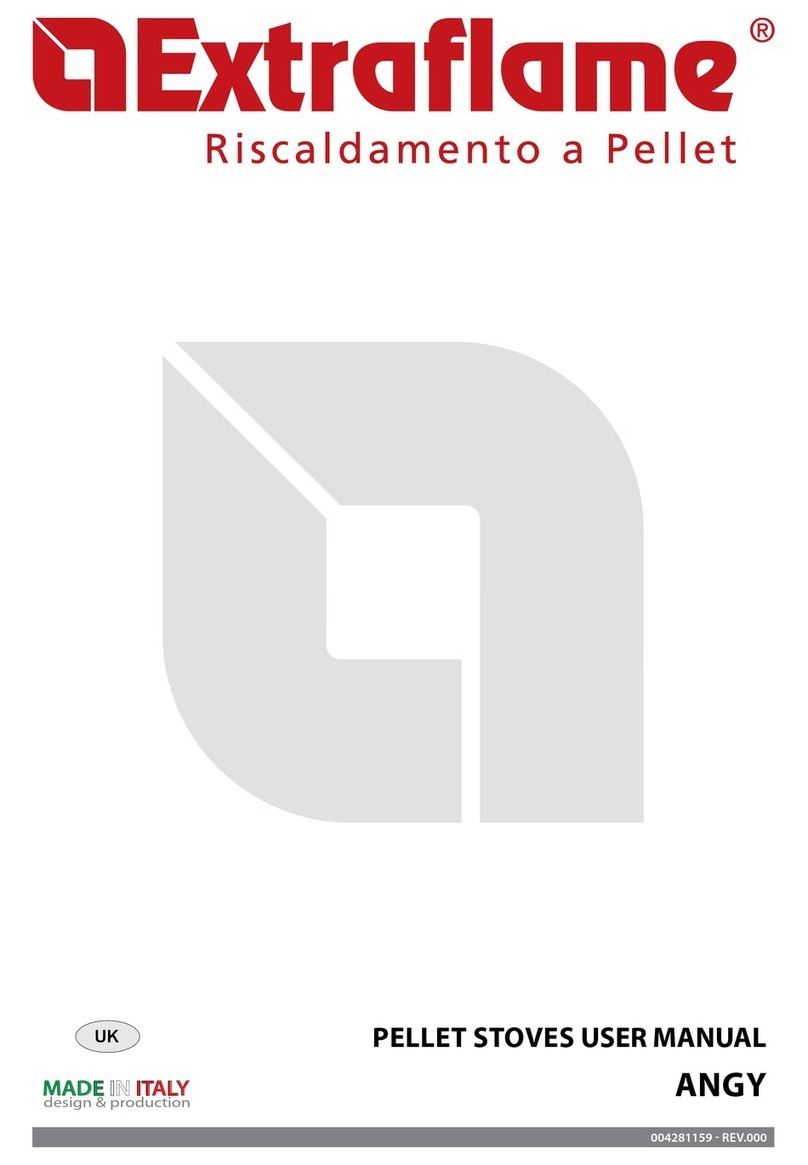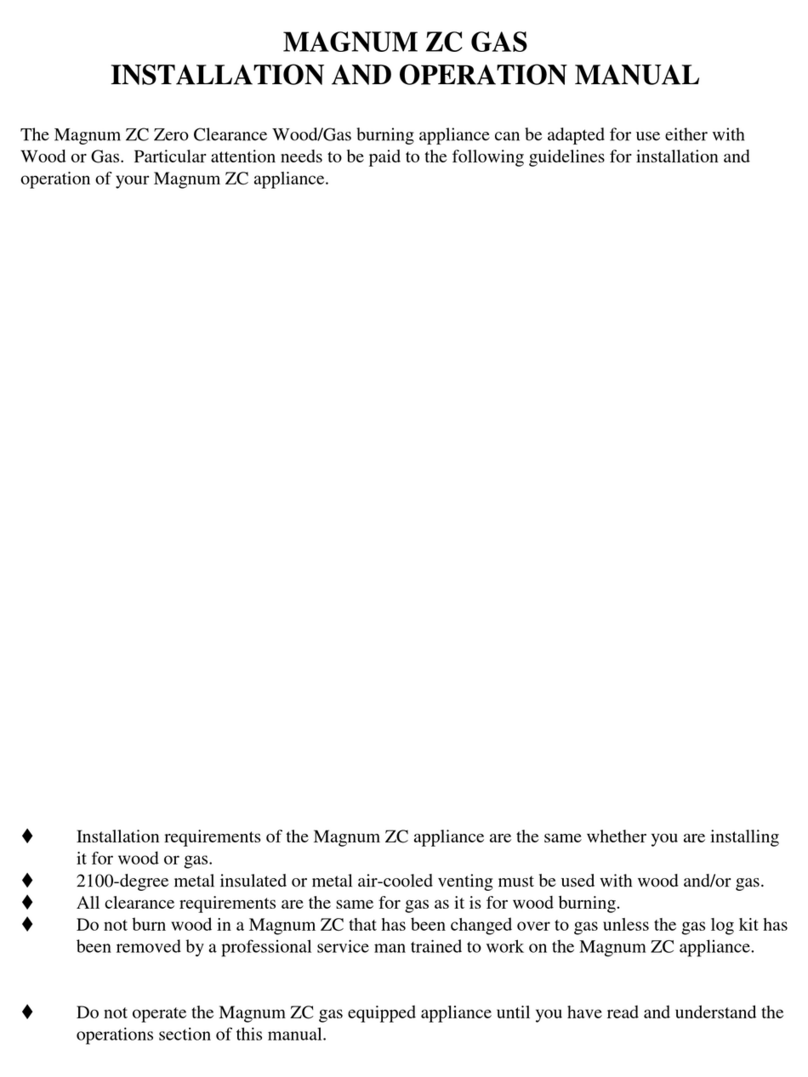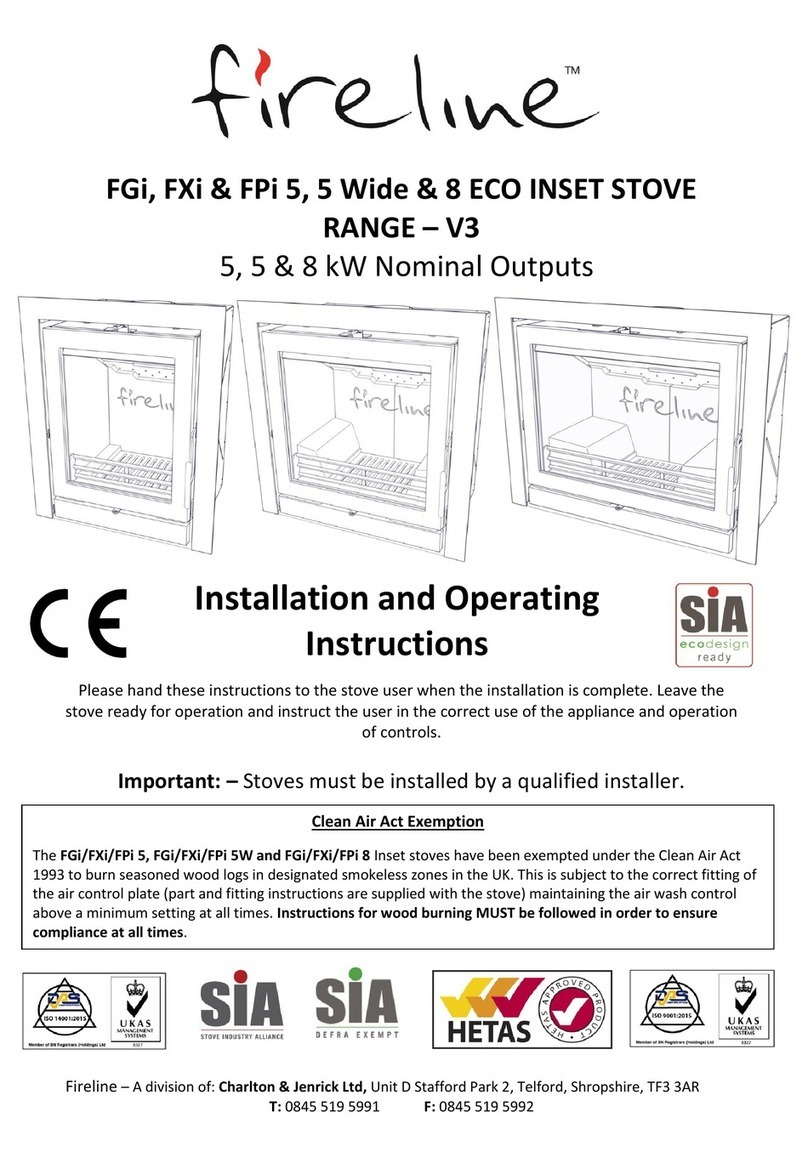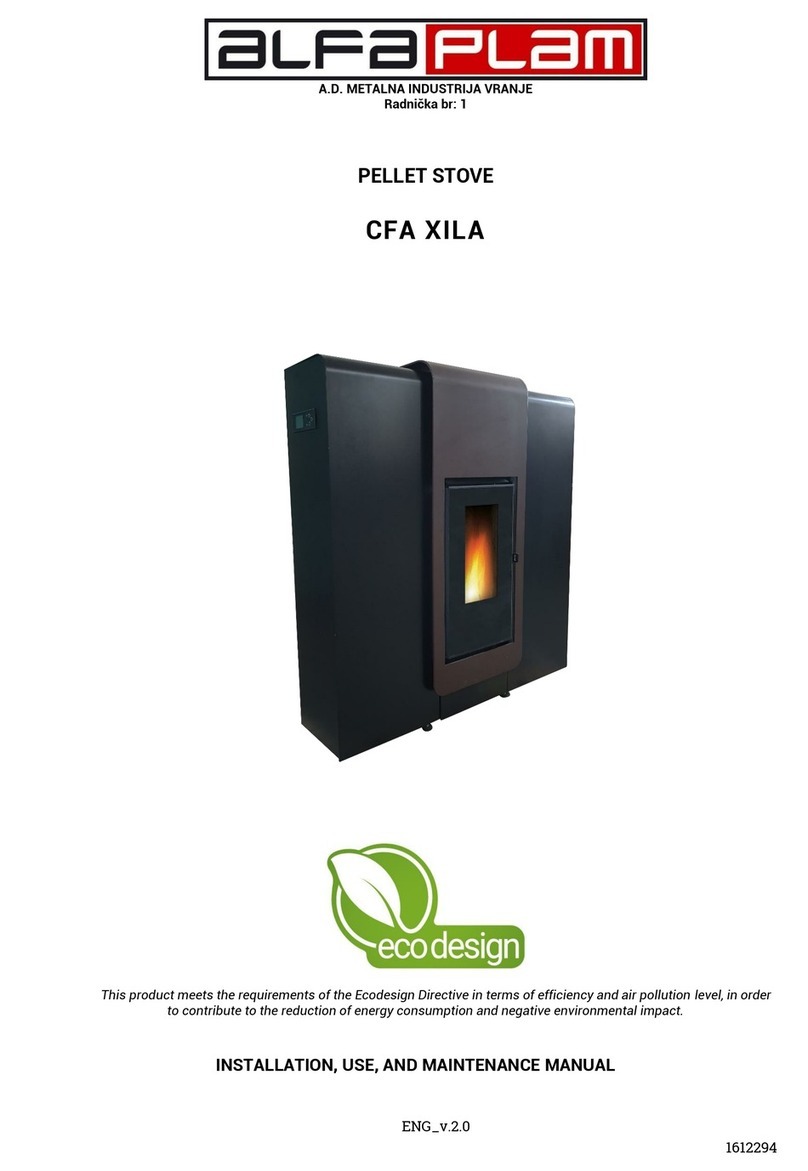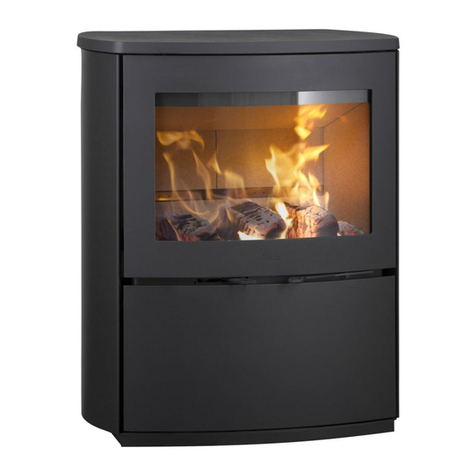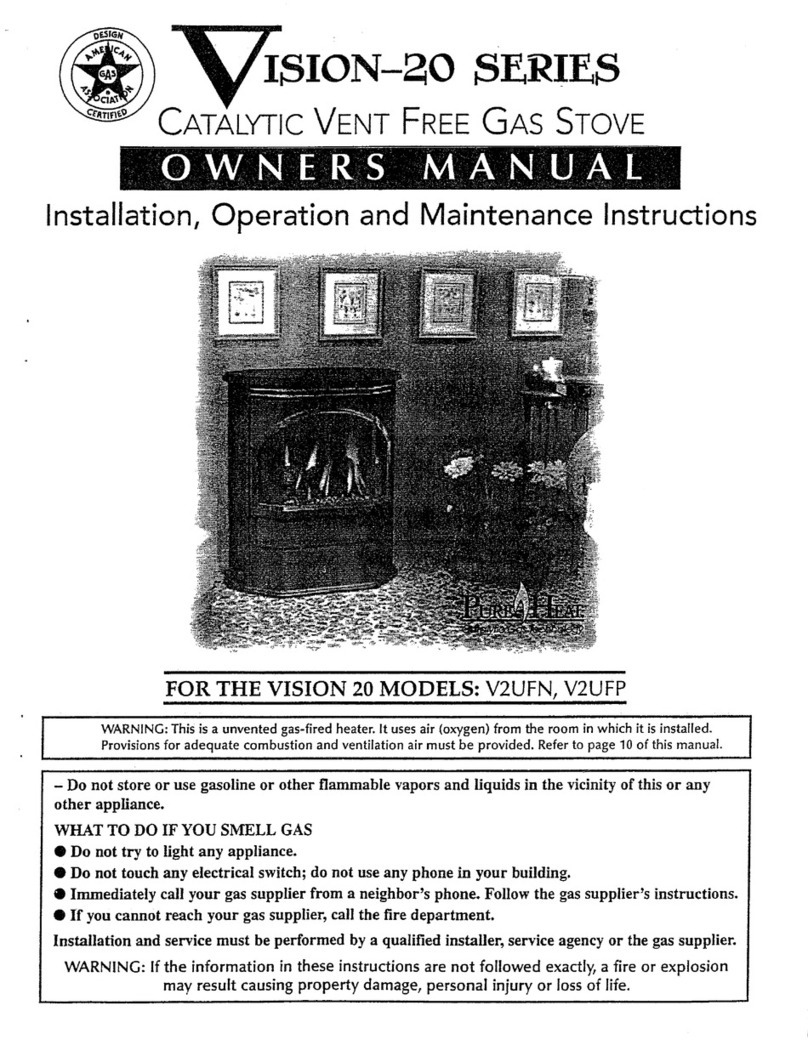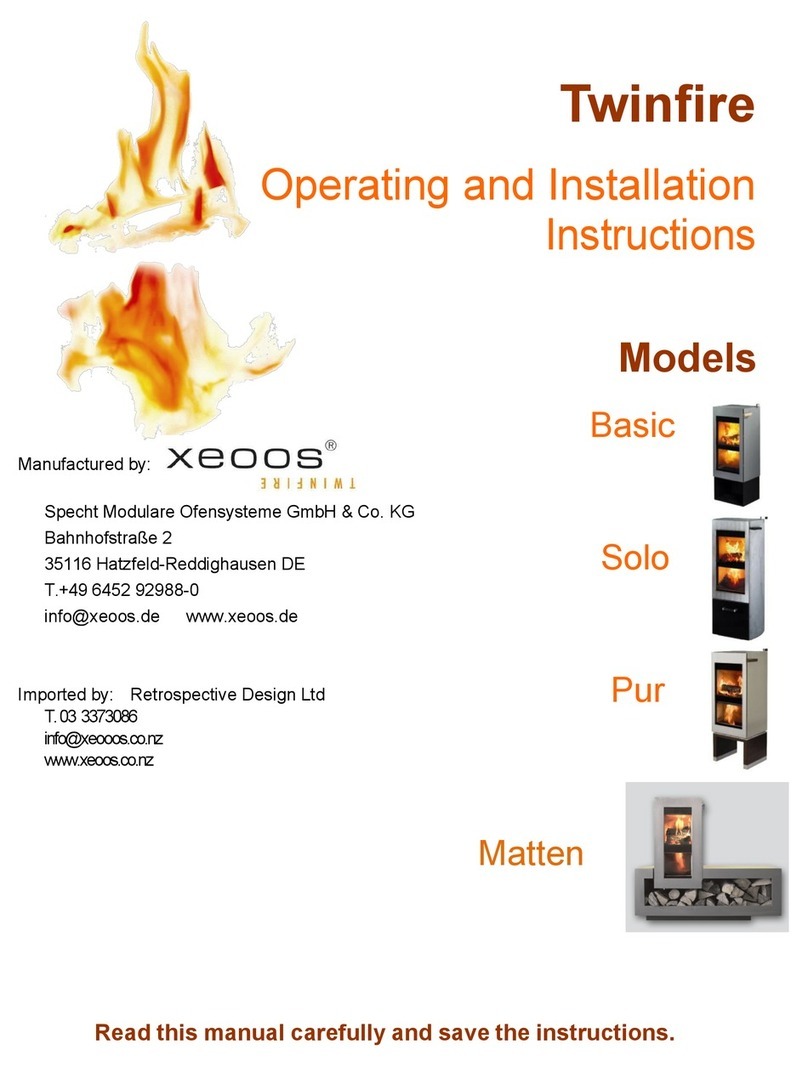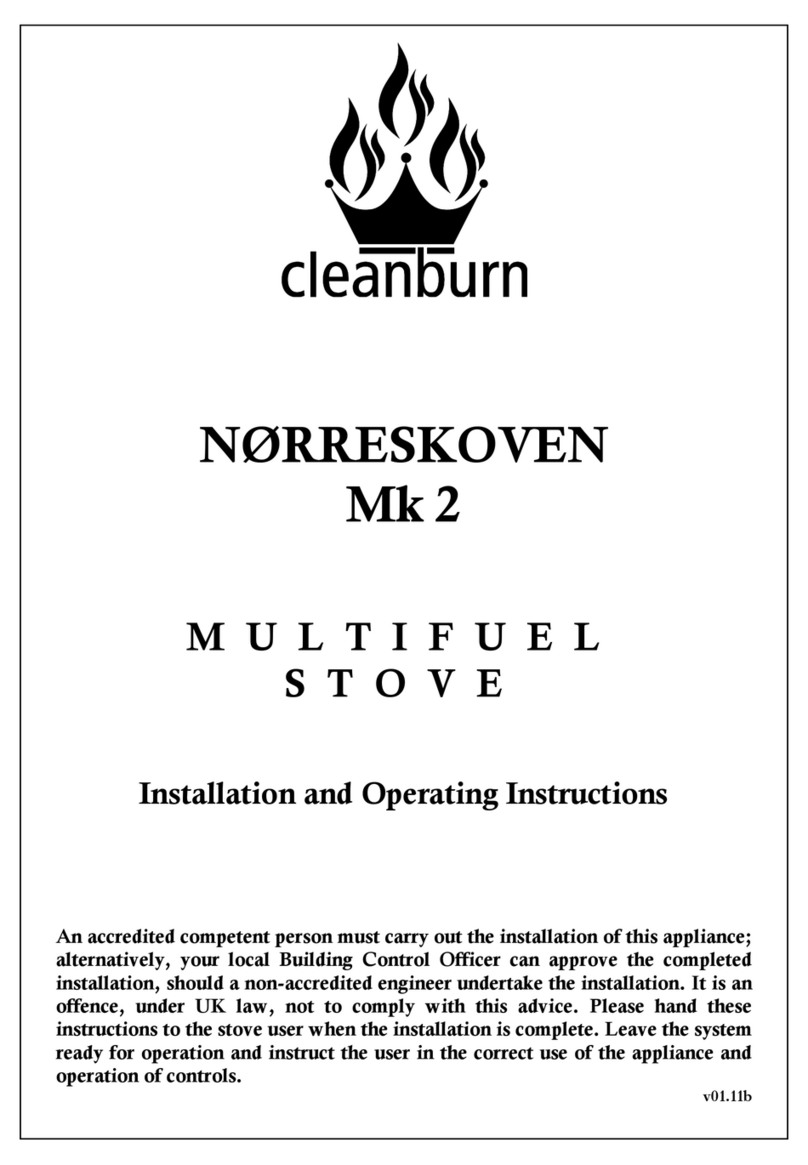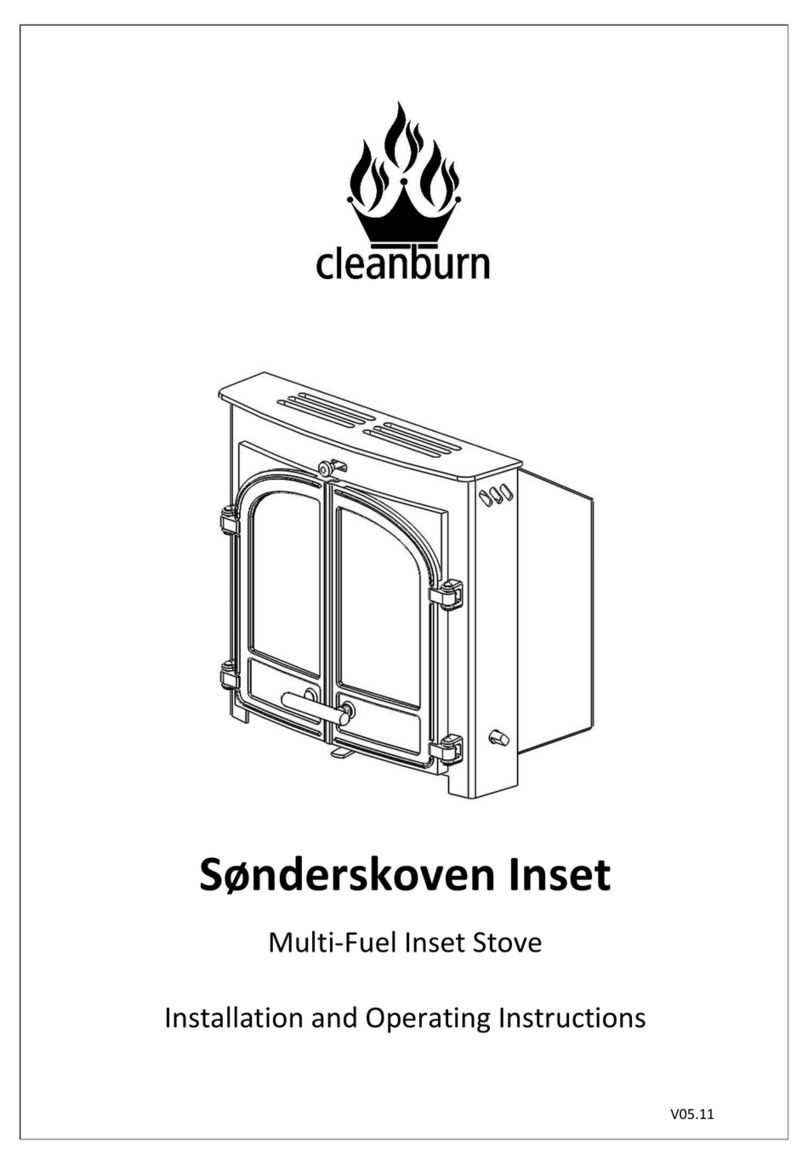
JINHCN05 RevE 22/07/14
If the appliance has been unused for a long period,
such as during the spring and summer months, a
competent person should check the chimney for
potential obstructions before lighting the stove i.e.
get the chimney swept before the start of the
heating season.
AS NECESSARY
Baffle-This should be removed and cleaned at
least once a month to prevent any build up of soot
or fly ash that could lead to blocked flueways and
dangerous fume emission.
If the baffle is removed the chimney/flueway can
be swept through the appliance.
Stove body –the stove is finished with a heat
resistant paint and this can be cleaned with a soft
brush. Do not clean the stove whilst it is hot; wait
until it has cooled down. The finish can be
renovated with proprietary stove paint.
Glass Panel(s) - Clean the glass panel when cool
with proprietary glass cleaner.
Highly abrasive substances should be avoided as
these can scratch the glass and make subsequent
cleaning more difficult.
Wet logs on heated glass, a badly aimed poker or
heavy slamming of the door could crack the glass
panel.
The glass will not fracture from heat.
Firebricks -In normal use, these can last for many
years. It is possible however, to crack them if logs
are continually jammed against them or if they are
frequently struck with a poker.
Check periodically for seriously cracked bricks,
which can be replaced with new, available from
your dealer.
Door Catch -The door catch may require
adjustment to maintain the door seal. To adjust
the catch, follow the procedure below;
Loosen the M6 grub screw.
Rotate the catch shaft one complete turn to
achieve the correct door operation.
Tighten the grub screw.
Rope - Check the rope around the door. If rope is
becoming detached, use Cleanburn Stoves rope
glue to reattach it. If the rope is in a poor
condition, a replacement rope kit may be ordered
from the Cleanburn Stoves spares range.
Chimney & Flueways - It is important that the
chimney, flueways and any connecting flue pipe
are swept regularly. This means at least once a
year for smokeless fuels and at least twice a year
for wood and other fuels.
The baffle will need to be removed from its
supports in order to sweep the chimney (see
‘Removing internal components’ instructions).
Only wire-centred sweeps’ brushes fitted with a
guide wheel should be used.
If it is not possible to sweep all parts of the
chimney through the appliance, ensure there is
adequate access to cleaning doors.
Seasonal use - If the appliance has been unused
for a long period of time, such as during the spring
and summer months, the chimney should be
checked for potential obstructions by a competent
person before lighting the stove.
Gaskets - all gaskets used on this appliance are
produced from a heat resistant material called
Manniglas. The glass gasket will have to be
replaced when a new piece of glass is fitted as the
gaskets become brittle after firing the stove. Over
time you may find that the gasket changes colour.
This is due to a reduction in the pigment used in
the manufacture of the product and no cause for
concern.
De-ashing –De-ashing should be carried out on a
regular basis to avoid a build up of ash and ensure
sufficient primary air flow. Empty the ashpan
regularly to prevent ash reaching the underside of
the great bars. At least every month remove the
ash barrier (see section ‘Removing Internal
Components’) and remove excess ash with a
vacuum cleaner.
















